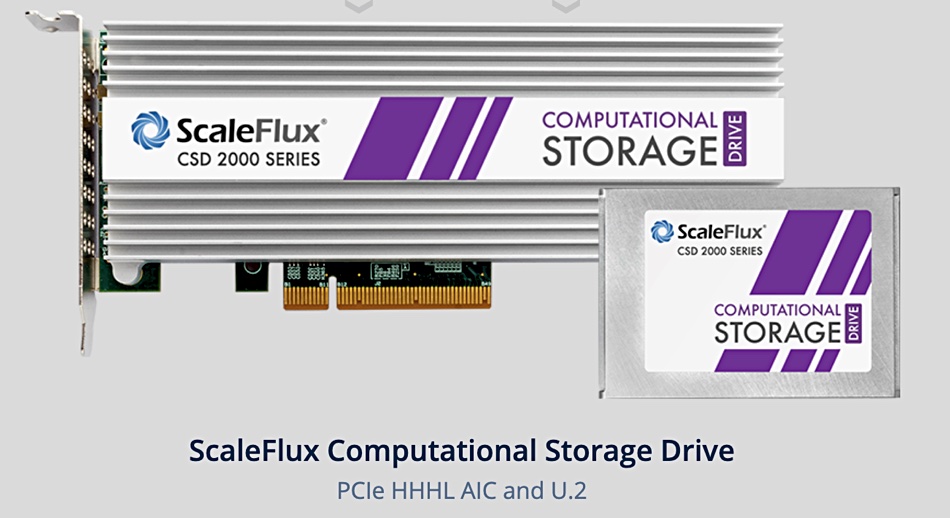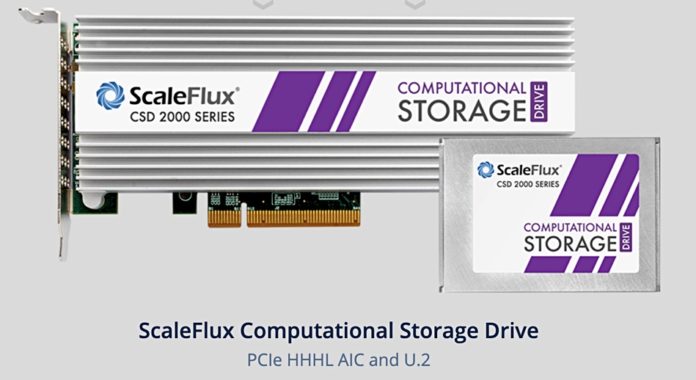ScaleFlux has added hardware compression to its computational flash storage drive, effectively doubling capacity and increasing performance by 50 per cent.
JB Baker, senior director of product management for ScaleFlux, supplied a quote: “Experience gained from the global deployment of our previous drives have led us to significant enhancements in the CSD 2000. Customer feedback is showing that the simultaneous reduction in storage costs and improvements in application latency and performance … is a compelling value proposition.”
Computational storage systems process data in the storage drive, thereby offloading the host server CPUs and improving overall performance.

The CSD 2000’s hardware engine has been updated with GZIP compression/decompression – which means no added latency. This doubles effective capacity – 4TB and 8TB raw capacity options increase to 8TB and 16TB. Application performance also improves.
- Aerospike ACT 3.2 transactions per second (tps) increase 1.5x,
- MySQL SysBench tps 1.5x,
- PostgreSQL SysBench update_non_index 2.8x.
According to ScaleFlux, the CSD 2000 delivers 40 to 70 per cent more IOPS than NVMe SSDs on mixed read and write OLTP workloads. NVMe SSD performance typically drops off as the write proportion of any workload increases according to ScaleFlux, which claims the CSD 2000 maintains performance within a narrow band, regardless of the read and write mix.
Alibaba has qualified Scaleflux’s computational storage for use with the Chinese hyperscaler’s data centre infrastructure stack, specifically the POLARDB relational database.
ScaleFlux’s original CSS 1000 drive incorporates a Xilinx FPGA paired with 2TB to 8TB of 3D NAND flash. It uses off-the-shelf code packages to accelerate Aerospike, Apache HBase, Hadoop and MySQL, OpenZFS and Ceph.
The CSD 2000 comes in the 2.5-inch (U.2) form factor. A PCIe add-in card will be available in a few weeks.








